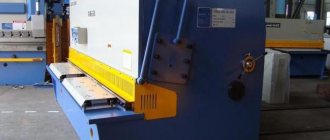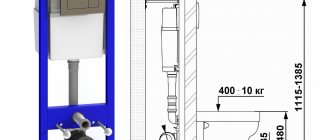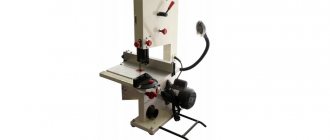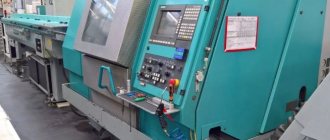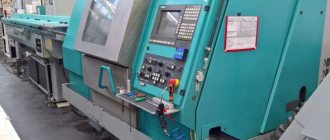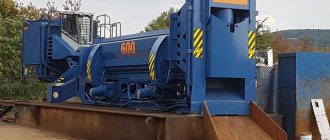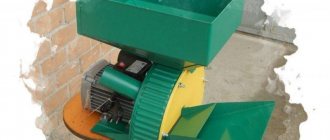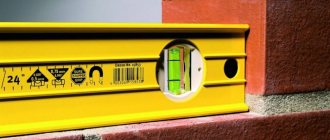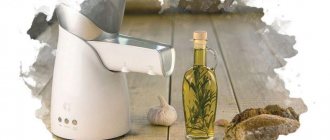General classification
Modern tools for cutting steel, iron, and other metals cope with material of any thickness. This is due to the variety of shapes and types of products, divided into several groups according to characteristics, including:
- cutting principle;
- principle of operation.
According to the cutting principle, metal scissors are:
- knife;
- die-cutting (notching).
Based on the principle of operation, they are distinguished:
- manual (mechanical);
- electric scissors.
Cutlery is a “classic of the genre.” They have two single-edged knives and cut metal only from the edge of the sheet. Nibblers work on the principle of hollowing out material and are more often used for profiled or corrugated sheets. With their help, metal is cut from the middle of the workpiece.
Knifes are divided into several groups:
- in the cutting direction (left/right);
- according to the shape of the cut (straight/curved).
Products with a right-hand cut have a marking line to the right of the cutting edge; scissors with a left-handed cut are the opposite. Cutting metal with scissors is carried out according to the applied markings, with the upper blade located above it. Straight metal scissors cut the workpiece strictly in a straight line, while curly ones allow you to maneuver and obtain products of unusual shapes.
Metal nibblers
Now let's take a closer look at hand scissors for cutting metal. They are more common than others, and the classification is supplemented by several subspecies.
Video about hydraulic metal cutting shears
Power-assisted hydraulic shears
Hydraulic hand shears are the most popular because they can be used to cut any material. Their design makes it possible to evenly distribute the applied force on the metal, and are characterized by power and small size at the same time. Guillotine shears are suitable for cutting rods and wire. Scissors are often used in production.
KVP NGO
Open type tool for cutting reinforcement, rolled metal, and profiled metal pipes. They are larger and heavier than guillotine tools. The cutting force applied is less, but due to the ability to open the blades, the ability to cut any material appears. Hydraulic shears NGO 100 can cut a profile with a cross-section of about 100 mm.
Hydraulic shears for firefighters and hydraulic shears for rescuers are used by the respective services. The tool does not require special skills in handling and handling. It is simply connected to a hydraulic pump and the profile is captured.
NG
A tool with knives arranged like a guillotine. Such tools are mainly used for cutting wire, rope, and cable. Used for cutting cables, ropes and wires. The quality of the cut is high, especially for thick cables. During the cutting process, the wires are fused together under the pressure of the blades.
Note. These types differ in the design of the hydraulic drive and the blade closing pattern.
Types of hand scissors for metal
The task of the tools in question is to cut workpieces using human physical strength. The group includes:
- ordinary;
- lever;
- roofing (chair);
- hydraulic;
- disk (roller);
- sheet metal scissors.
VIEW Sheet metal cutting shears on AliExpress →
Chair scissors
Lever metal shears
In conventional models, the cutting edge and handle are made of the same material by forging. The efficiency of the tool is affected by the applied force, the length of the cutting edge, and the length of the handle. Conventional hand metal shears are divided into:
- pass-through (straight cut);
- curly (curvilinear);
- ideal (universal; cuts both straight and curved).
Lever metal shears differ from the above mentioned ones in that they have a hinged connection between the cutting edge and the handle. This creates an additional lever that facilitates the work of the master. The required force to cut the workpiece is less, and the quality of work does not suffer. They have one drawback - they don’t work without being attached to a workbench.
For materials of medium thickness (2-4 mm), roofing devices are used. The design allows them to be attached to a mechanic’s workbench so that the master spends less physical effort. The name indicates the compatibility of the tool for cutting profiled sheets (used for roofing) and similar products of complex shape.
It is important to know that among manual devices there are no die-cut ones. The remaining types of scissors have a complex design and therefore require separate consideration.
Video about hydraulic metal shears 25 mm
The design of hydraulic open shears allows them to be used in construction and logging. A hydraulic grab of great power, which is mounted on a tractor of enormous weight, cuts concrete, trees, and metal of any kind with equal dexterity. The weight-to-effort ratio gives excellent results. Household hydraulic shears can last 3 to 4 years if handled well. A tool for professional use can make 3 thousand cuts, then you need to change the seals and valves of the hydraulic system.
Features of hydraulic products
The products are designed for cutting metal structures (rods, profiled iron, scrap, fittings) using an evenly distributed force along the length of the blade. Conventionally divided into two groups:
- small-sized;
- large-sized.
Hydraulic shears are actively used by rescue services
The first ones are also called manual. For example, the following are manual hydraulic shears NGR-20 “KVT”. Their purpose is to cut armored cables, fittings, and steel ropes. The main characteristics include:
- permissible thickness of the cut product is 20 mm;
- high-strength cutting blade (60-62 on the Rockwell scale);
- maximum force - 5 t;
- length - 36 cm, weight - 3.2 kg;
- the presence of a rotating guillotine type head;
- addition of a pressure release lever to the design;
- cost about 20 thousand rubles.
VIEW Hydraulic Shears on AliExpress → Large tools are bolted onto the base machine. Intended for:
- scrap metal cutting;
- recycling of cars, buses, trucks;
- dismantling of metal structures;
- cutting and recycling of rolling stock;
- cutting of boats, ships, boats.
Impressive hydraulic shears for cutting metal are available in several series. For example, AD class models dismantle steel structures, MP-T is suitable for longitudinal cutting of metal (sheet), DS for reinforced concrete, and so on.
General information about hydraulic shears
Advantages of hydraulic guillotine shears for metal
- The force of pressure on the metal is about a ton, with a tool weight of no more than 4 kg. This is achieved through a significant conversion rate.
- Autonomous operation of scissors and their mobility do not require an electric drive.
- Excellent cutting quality and single cut length of the material.
- Operational safety is much higher compared to conventional scissors with a lever system.
Note. The blade of hydraulic shears moves slowly, which allows you to take control of the process of working with metal. If there is insufficient force for a cut, the operator will be able to understand this by the growing resistance of the hydraulic drive.
This nuance in work has an advantage, since the tool is capable of generating greater pressure on the metal. This feature makes it possible to easily cut reinforcement and sheets of metal, extremely carefully in a short time.
The design of the tool provides for the principle of increasing force using a pump or hydraulic cylinder. The master applies a cylinder to the lever, which applies a force of 10 to 15 kg, while the working rod, connected to a moving blade, produces up to 4 - 5 tons in manual models, and 50 -60 tons in hydraulic ones.
Types of hydraulic shears for metal cutting
- Manual hydraulic shears cut metal, cable, fittings. These include tools used in emergency services, as well as scissors for cutting rods and wires.
- Machine or stationary hydraulic shears. This is a tool equipped with a hydraulic cylinder drive that receives energy from a pumping station. This tool is capable of cutting metal products, as well as stitching and punching. Due to this, it is mainly used in factories for the production of machines of any type.
- The hydraulic cutting system is used in construction, timber processing and the metallurgical complex.
Note. Hydraulic shears are produced in two types - open edge shears and guillotine shears.
Open guillotine shears for cutting metal resemble ordinary office tools, which have 2 blades connected in the middle, and during cutting work, under the influence of pushing rods, they simultaneously rotate opposite each other, cutting the material.
Hydraulic guillotine shears have a simple design. One blade is fixed in a steel frame in a stationary state. The second blade moves in a straight line under the pressure of a hydraulically based pusher. When the blades meet, the process of cutting metal is carried out.
Disc tool features
Disc shears, also known as roller shears, are a more advanced design. The working bodies are roller knives, which, when rotated in different directions, are pressed into the workpiece and cut it. Mutual friction between the metal and the disks causes the sheet to move along the tool.
Roller metal shears
Typically, disc shears have two rollers - top and bottom. Their relative arrangement is of three types:
- parallel;
- with one inclined roller;
- with both inclined rollers.
Manual circular shears with a parallel position of the working parts are used for cutting metal into strips. The second group is used when working with ring or round workpieces. The third is for them, but with a small radius.
The distinctive properties of the tool are its speed of operation and the absence of the need for additional processing of the cut edge. In addition, roller shears for cutting sheet metal cost in an acceptable range from 20 to 40 thousand rubles, thanks to which they have become very popular among consumers.
Features of Sheet Shears
The operating principle is reminiscent of conventional household analogues.
A static knife is mounted on a rigid support, and a movable knife is mounted on a perpendicular plane. The support zone is adjustable, allowing the user to select the desired gap between both blades to suit the thickness of the workpiece. Sheet metal shears cut the workpiece only from the edge; from the middle the design will not allow. Shaped cutting is also difficult to achieve.
The demand for products is due to the correct ratio of the thickness of the sheet being cut and the cost. For example, sheet metal shears Makita BJS160Z cost about 10 thousand rubles, and have the following characteristics:
- maximum cutting thickness for steel - 1.6 mm, aluminum - 2.5 mm;
- minimum cutting diameter - 0.5 m;
- battery power;
- stroke frequency - 4300/min.
This tool is sufficient for standard home and garage work.
Domestic manufacturers offer products with similar parameters and lower prices. For example, sheet metal shears Caliber-Master ENN-500 with a maximum cutting thickness of 2.5 mm will cost the consumer 4 thousand rubles. However, user reviews indicate that foreign manufacturers (Makita, Bosch, Metabo and others) supply more reliable equipment to the market.
VIEW Makita Sheet Shears on AliExpress →
Independent production of products
Since cutting metal with hand shears is so easy, some craftsmen don't see the point in buying expensive equipment. This is especially true for roller models - expensive and attractive. However, it is not difficult to make homemade metal scissors if the material of the knives is a durable alloy, the strength of which is higher than that of the material being cut.
It is common to use bearings as rollers. Their ends are pre-sharpened. The drive roller is fixed to the handle, with pressure on which the tool is pressed into the workpiece. Next, the user only pulls the sheet of metal towards himself, keeping the handle pressed to the base.
No matter how easy it may seem to make metal scissors with your own hands, it is not recommended. Equipment from well-known brands will ensure safe operation when cutting workpieces and will last longer. In addition, there are models on the shelves that do not require additional units for operation (homemade lever scissors for metal, for example, work only in conjunction with a machine).
What types of hairdressing scissors are there?
Before buying scissors, the craftsman is recommended to test the product for comfort and weight in his hands. The handle of the tool should not slip or cause discomfort. Convenience largely depends on the handle. It can be with symmetrical, asymmetrical and semi-symmetrical rings. The most comfortable professional scissors are those with an asymmetrical handle. In the manufacture of the tool, stainless steel with inclusions of silicon is used. The accessory is distinguished by its strength, hardness and resistance to dullness. An important point is smooth operation. Hairdressing scissors should open and close smoothly, without much effort.
There are 2 types of scissors:
- Straight hairdressing scissors are designed for even cutting, slicing and edging. Different length blades are needed for different hair types. A cutting tool 14-15 cm long is considered universal. This model can be used to create haircuts of any type. 15-17cm - an elongated type of blade designed for long hair. The smallest ones, 10-12 cm, are used to model short hairstyles or trim mustaches and beards.
- Thinning scissors are designed for thinning volume. The master carefully cuts the strands in separate sections for a natural effect. Thanks to thinning, the strands become light and raised at the roots. There are teeth on one or both sides that affect the final result.
Tips for choosing
Before purchasing, the consumer studies the characteristics of the tool:
- power;
- battery capacity (when selecting class models);
- ergonomics;
- maximum metal thickness;
- maneuverability;
- protective functions;
- execution of the starting unit;
- functionality of cutting parts.
The user must remember the safety precautions and check the serviceability of all components of the unit before starting work. When using electric shears, give them breaks to allow the motor to cool down.
The above classification of products for cutting metal blanks will help novice craftsmen navigate the variety of existing models.

